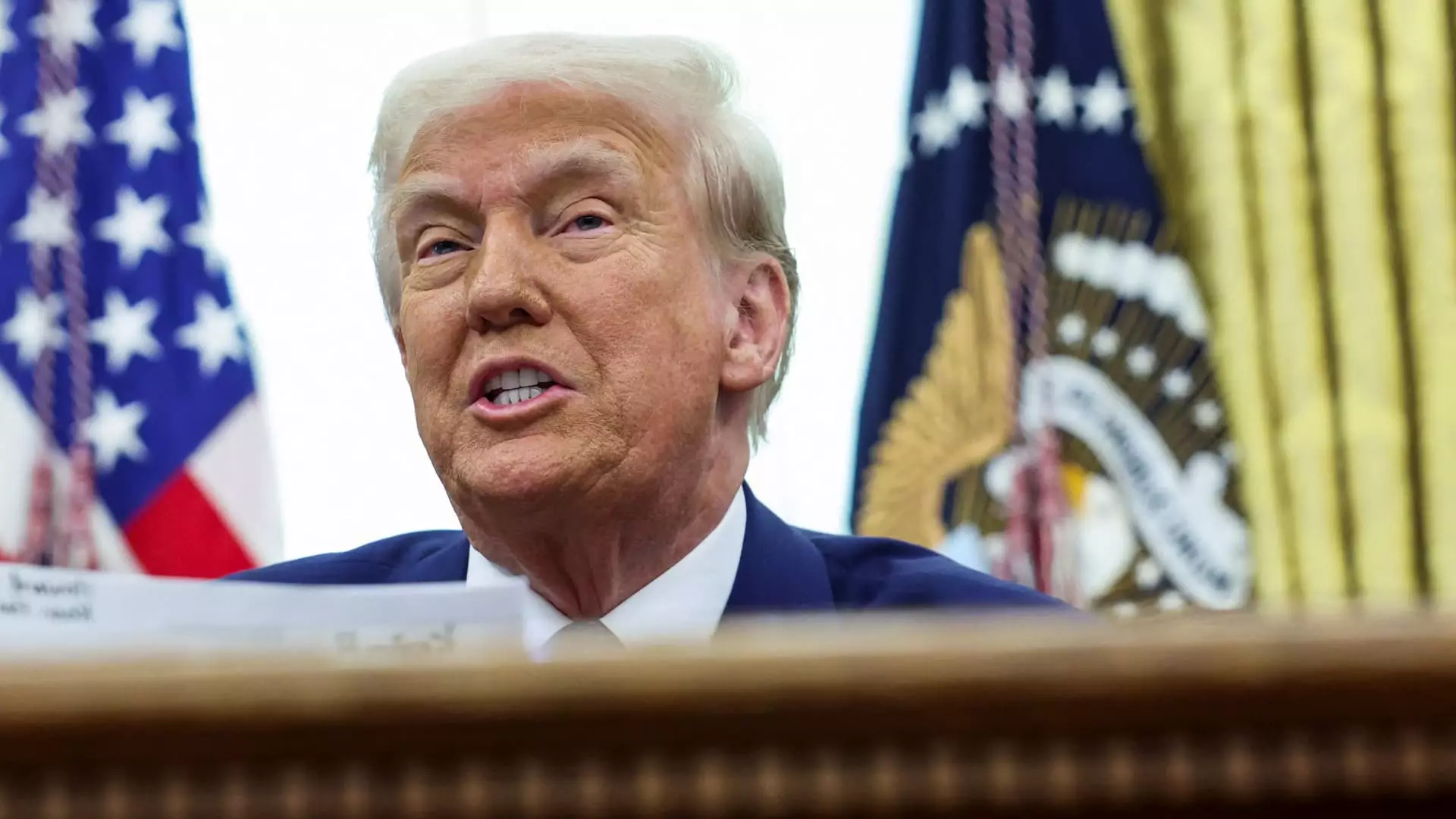In the ever-volatile landscape of defense stocks, a recent statement from President Donald Trump has unearthed significant concerns among investors. During a press briefing at the White House, Trump proposed that the United States could potentially halve its defense budget in future negotiations with China and Russia. This proclamation sent shockwaves through the financial markets, resulting in considerable drops in the stock prices of major defense contractors. The implications of such statements can reverberate far beyond mere financial statistics; they underscore an ongoing critique of the direction of U.S. military funding and strategy.
Trump’s suggestion to enhance diplomatic discussions with key global players, namely China and Russia, seems to stem from an overarching strategy to redirect enormous defense expenditures towards other pressing national needs. “At some point, when things settle down, I’m going to meet with China and I’m going to meet with Russia… and I’m going to say there’s no reason for us to be spending almost $1 trillion on the military,” Trump articulated. This discourse positions military spending not merely as a budgetary issue, but as a matter entwined with diplomatic relations and national priorities. By expressing intentions to negotiate reduced military budgets, Trump has raised alarms about the viability of long-standing defense contracts, which may ultimately destabilize the sector.
Following Trump’s comments, the stock performance of established defense companies illustrated immediate investor anxiety. Prominent firms such as Lockheed Martin, Northrop Grumman, and General Dynamics experienced declines of 1.3%, 2.6%, and 2.1% respectively. These figures signal a clear indication that Wall Street interprets the President’s dialogue as a potential threat to future defense revenues. For investors, the unpredictability surrounding defense spending reflects a larger concern regarding the U.S. government’s commitment to maintaining military readiness while simultaneously balancing a host of domestic priorities.
Trump’s mixed messages regarding defense spending have left many analysts puzzled. Throughout his presidency and particularly during his 2024 campaign, he has oscillated between emphasizing the necessity for a robust military—evidenced by initiatives like exploring an “Iron Dome of America”—and advocating for significant cuts. Furthermore, his collaboration with innovators like Elon Musk to identify governmental cost reductions presents a dual narrative that confounds stakeholders. Roman Schweizer, a policy analyst at TD Cowen, noted this complexity, stating that “people are confused by a number of different crosscurrents on defense spending.” Such ambiguity jeopardizes the stability of the defense sector and complicates strategic planning for defense contractors reliant on consistent funding.
As the Trump administration navigates its complicated relationship with defense spending amidst evolving geopolitical landscapes, the confluence of diplomacy, military readiness, and budgetary considerations will remain central to discussions. Investors and defense contractors alike must adapt to shifting government priorities and engage in strategic re-evaluations to safeguard their interests. In a climate where policy announcements from leadership can swiftly alter market trajectories, a clear and coherent strategy will be essential for both the U.S. military and the defense industries that support it.

